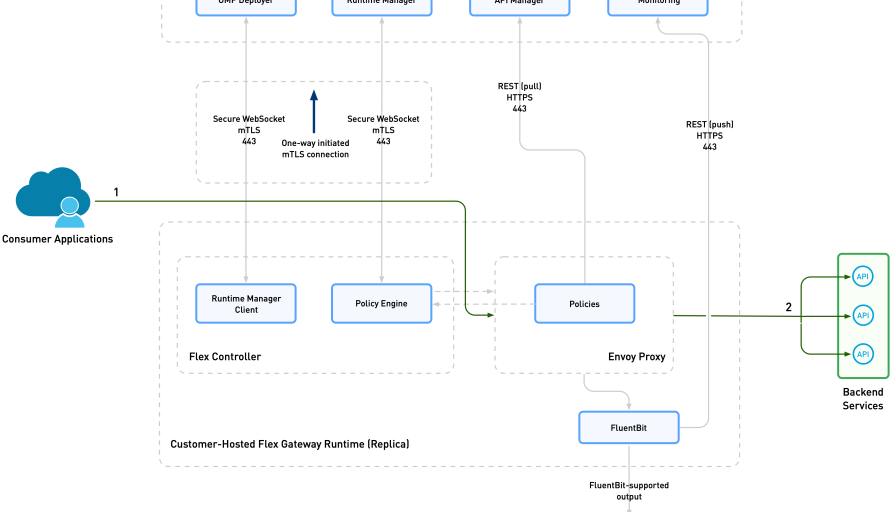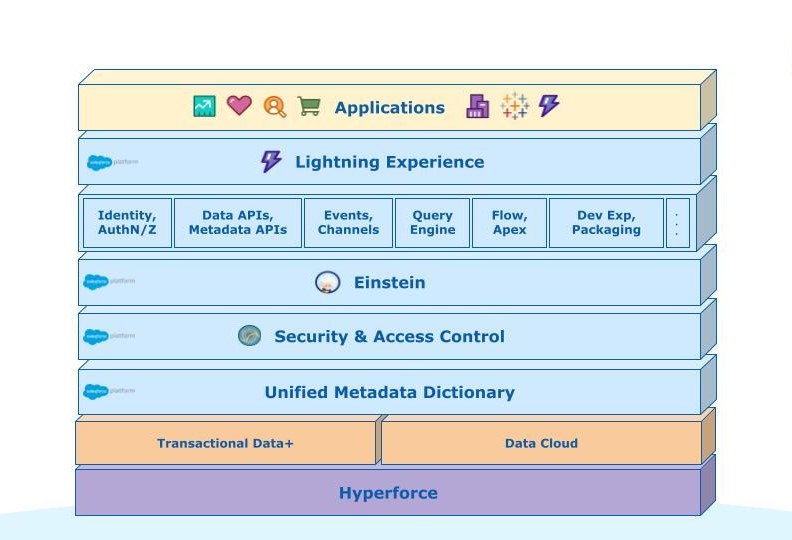
In our “Engineering Energizers” Q&A series, we explore the remarkable journeys of engineering leaders who have made significant contributions in their respective fields. Today, we dive into the technical journey of Evangelina Martinez Ruiz Moreno, a Senior Director at Salesforce, who spearheaded the development of MuleSoft’s new Anypoint Flex Gateway.
Read on to explore how she addressed risks, overcame challenges, and leveraged open-source technologies to deliver this highly customizable and efficient API management solution…
What does your team focus on within the API management aspect of MuleSoft?
My MuleSoft team concentrates on the developer experience of API development and on the management of the API instances. We provide tools for writing specifications, testing APIs, and managing their access. This includes adding security constraints such as restricting access to certain clients or setting request limits. We offer this experience through our API platform, and we also develop the runtimes where the API or API Proxy is deployed and where policy enforcement takes place.
Our latest big product release is Anypoint Flex Gateway, a lightning-fast and secure API management solution that seamlessly integrates with DevOps and CI/CD workflows, delivering high performance for resource intensive apps while ensuring enterprise-level security and manageability across all environments.
Eva explains how her team solves engineering challenges.
What were the challenges associated with developing Flex Gateway?
Developing MuleSoft’s Flex Gateway posed numerous challenges, categorized into two key areas:
- Product: Shaping the product, defining the experience, and determining the requirements were key challenges in developing Flex Gateway.
- Technical: Defining the architecture and selecting appropriate technologies, many of which were new to the team, such as Envoy, Go, and Rust. To execute the project, we had to make changes to multiple components and coordinate efforts among various teams and roles to support Flex in the platform.
In addition to these overarching challenges, several specific obstacles were encountered:
- Complexity: Building a comprehensive API management solution can lead to excessive complexity, making it challenging for customers to use. Different user personas with varying needs contribute to this complexity.
- Narrow Focus: Focusing too much on one user journey can result in neglecting other perspectives, such as integration and API management. It is important to consider the broader needs of users to ensure the solution is effective.
- Lack of Integration: Failing to integrate the solution across all platform components poses a risk. Seamless integration is crucial for smooth interactions and efficient workflows.
Diving deeper, how did your team address those challenges?
We followed a comprehensive approach:
- Collaborative and Early Engagement: We worked jointly with our product manager, user experience team, and various other internal teams from the beginning, involving them in the ideation, design, and testing process to gather valuable feedback and ensure a well-rounded solution.
- Strategic Validation: We implemented pilot or beta programs to gather feedback, validate assumptions, and assess if the solution met requirements without unnecessary complexity. Additionally, leveraging external evaluations, such as Gartner, helped validate our solution and roadmap, providing valuable insights into how well we are addressing customer needs and aligning with our vision for the future.
- Customer and Partner Engagement: We engaged closely with customers and partners to gather valuable feedback that shapes our roadmap. By prioritizing open communication channels, we actively listened to customer feedback, understood their requirements, and anticipated their future needs. This feedback served as the foundation for impactful enhancements.
How did you ensure that Flex Gateway remained simple for customers while effectively managing its complexity?
We followed a strategic approach that involved breaking down the solution into different phases, allowing us to release early-on value and gather feedback. This iterative process helped us validate both the product and its scope, ensuring we met customer needs without overwhelming them.
To ensure a balanced solution and optimize time to market, we carefully assessed the minimum viable product (MVP), avoiding both falling short and over-delivering. This involved close collaboration between UX, product management, product, architecture, and engineering teams during the ideation stages of our software development lifecycle, defining an MVP that was optimal for the first release.
Additionally, we implemented a milestone-based approach to enhance the delivery process. These milestones served as checkpoints for conducting internal demos and gathering valuable feedback from both internal teams and external stakeholders. This approach facilitated early integration among the various components involved in the execution.

A look at the relationship between the control plane and runtime components.
How did open-source technologies contribute to the development of Flex Gateway?
Open-source technologies enabled us to deliver a highly customizable, efficient, and integrated solution for our customers’ needs. These technologies included:
- Envoy: As our primary technology, we actively contributed to Envoy’s source code, allowing us to customize and optimize the gateway according to our specific needs.
- Fluentbit: This scalable login and metrics processor helped us effectively manage metrics and logs within the gateway, ensuring efficient tracking and analysis of data.
- WebAssembly (WASM): By utilizing WASM an aggregation of web assembly, we wrote powerful and portable policies, implementing complex logic and rules to meet the diverse requirements of our customers.
- DataWeave: This internal data transformation tool provided a versatile solution for data transformation within policies and across the MuleSoft platform, enhancing the flexibility and efficiency of our gateway.
- Anything Modeling Language (AML) and AML Modeling Framework (AMF): These tools enabled us to create standardized modeling and documentation of APIs, ensuring consistency and ease of integration.
Eva shares why engineers should join Salesforce.
How has your experience at Salesforce shaped your understanding of leadership?
One of the key lessons I have learned is the importance of breaking down silos and fostering collaboration. This was particularly evident during the successful release of Flex Gateway, where strong interdependence among teams was crucial. By adopting a collaborative approach, we ensured that every team member felt involved and valued, rather than being seen as mere dependencies.
However, working in a collaborative environment presents challenges, such as misaligned priorities when teams have different assumptions or interpretations of project goals. Clear team goals and alignment are essential to address this challenge.
To enhance understanding and engagement, it is important to provide context and help team members see the bigger picture of their contributions, especially when working on components for different initiatives. This can be achieved by sharing our team’s overarching goals, which helps align priorities. By sharing the vision, impact, celebrations, recognition, and working together to overcome challenges, we foster team-wide unity.
Learn More
- Stay connected — join our Talent Community!
- Check out our Technology and Product teams to learn how you can get involved.
- Discover the latest MuleSoft news. Check out the MuleSoft Blog.






